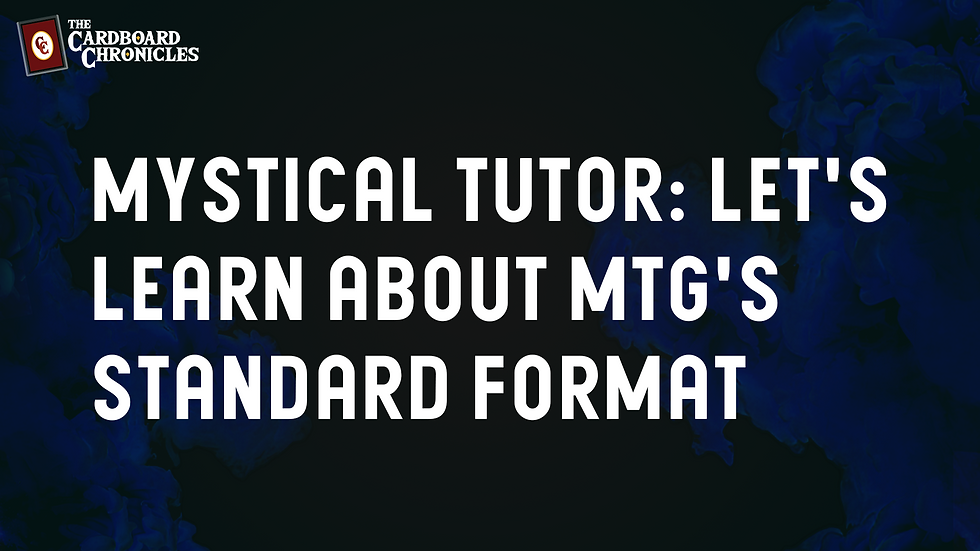Mystical Tutor | Peeling Back MTG's Layer System
- Greg Montique

- Jun 9
- 3 min read
I remember the first time someone argued with me about Magic: The Gathering's layer system. I thought they were joking. Layers? Like onions and ogres? I was just trying to cast a simple Giant Growth and have a good time.
But no. The stack is just the appetizer. If you really want to dine at the rules buffet, you have to wrap your brain around layers, the game’s way of deciding how continuous effects interact. If this sounds confusing, that’s because it is. But don’t worry, grab a fork. We’re going in.
Wait, What's MTG's Layer System Again?
Imagine you have a creature. Let’s say it’s a 2/2 Grizzly Bears. Now imagine a bunch of effects are trying to modify it:
One effect changes its power and toughness.
Another changes its creature type.
Another makes it an artifact.
Another turns it into a copy of something else.
Another gives it +1/+1.
Another removes all abilities.
Which of these effects happens first?

You can’t just throw them all in a blender. Magic’s rules have a strict sequence that determines how these effects apply. That’s the layer system—a fancy way of saying “in this very particular order, or chaos ensues.”
So Let's Break the Layers Down
There are seven official layers, and they each handle different types of effects. Here’s a crash course from a player who has definitely messed up every single one of these at some point:
Layer 1: Copy Effects: Cards that say “this becomes a copy of that” happen here. If your bear turns into a Dragon, that’s handled first.
Layer 2: Control-Changing Effects: If someone steals your creature, it happens in this layer. No, you can’t just say “no take-backs.”
Layer 3: Text-Changing Effects: If something changes a creature’s text, like if “goblin” becomes “banana” that gets sorted here. Yes, that’s a thing.
Layer 4: Type-Changing Effects: Making your bear into an artifact or removing legendary from a creature type, goes here. This is where you wonder why your lands suddenly have performance anxiety.
Layer 5: Color-Changing Effects: Does it turn blue? Does it stop being green? That’s this layer’s job. It’s rainbow relocation.
Layer 6: Ability-Adding and Removing Effects: This is where you give creatures flying, deathtouch, or take away abilities entirely. Also known as the 6th layer of disappointment.
Layer 7: Power/Toughness Changes: This one’s so intense it has five sublayers, because why not?
7a: Characteristic-defining abilities (like Tarmogoyf’s power and toughness)
7b: Effects that set power and toughness to specific numbers
7c: Effects that modify power and toughness (like +2/+2)
7d: Effects from counters (yes, counters are their own separate sublayer)
7e: Effects that switch power and toughness (like Inside Out)
Now picture all of these happening at once and you'll understand why judges are the true heroes of Magic.
Okay But... Why Does This Matter?
Because it can define whether you win or lose.
Imagine two cards:
One removes a creature’s abilities.
Another gives it +3/+3 based on one of those abilities.
If the ability-removal happens in Layer 6 and the buff happens in Layer 7c, the ability is already gone before the buff checks for it. Your creature ends up with zero bonus and an attitude.
It’s the kind of thing you don’t think about until it suddenly ruins your master plan. Then you start reading rules documents and muttering "layers" like a conspiracy theorist in a basement.
How Do You Actually Use This Knowledge?
Honestly? Most of the time, you don’t need to know every detail. If a weird interaction comes up, the answer is usually one of the following:
"Let’s look it up."
"Judge!"
"Uhh... let’s just say it doesn’t work and move on."
But if you do want to dig in, just remember: Layers aren’t designed to torment you. They’re there to create consistent rules for an incresingly complex game. And once you start to understand them, there’s a weird satisfaction in seeing how the pieces fit together.
Like a really nerdy lasagna.
Just Breathe, It'll Be Alright
The MTG layer system is one of the most infamous brain-busters. But with a little levity and a lot of patience, it starts to make a twisted kind of sense. Just don’t try to explain it to your non-Magic-playing friends. They’ll think you joined a cult.
And maybe you did.
But at least it's a fun cult.










Comments